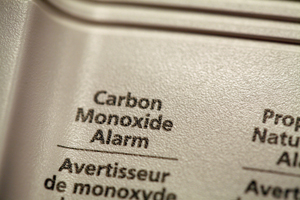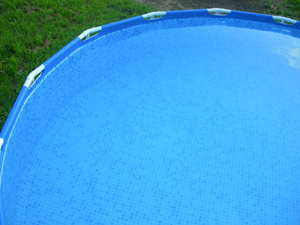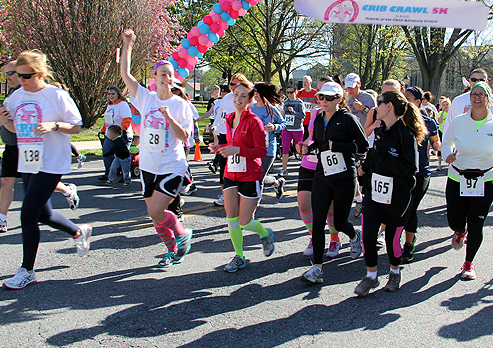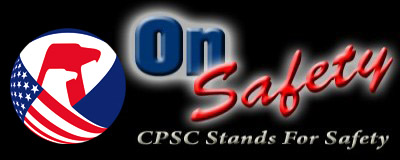OnSafety is the Official Blog Site of the U.S. Consumer Product Safety Commission. Here you'll find the latest safety information as well as important messages that will keep you and your family safe. We hope you'll visit often!
|
By CPSC Blogger on April 26, 2012

Calling all moms, dads and kids of all ages in the Washington, D.C., region. Join us at our ScienSafety! booth at this year’s USA Science and Engineering Festival.
The free festival is open from 10 a.m. to 6 p.m. on Saturday, April 28, and from 10 a.m. to 4 p.m. on Sunday, April 29, at the Walter E. Washington Convention Center, 801 Mount Vernon Place, NW, Washington, D.C.
At our booth (booth #727!), kids will work with CPSC engineers on a hands-on demonstration on toy testing. They’ll learn first-hand how our scientists and engineers determine which ages a toy is appropriate for.
So, bring your kids to meet and play with us. They, and you, will learn how to play it safe.
This address for this post is: http://www.cpsc.gov/onsafety/2012/04/live-hands-on-event-product-safety-is-no-accident/
By CPSC Blogger on April 25, 2012
 La prensa reportó que lamentablemente cinco salvadoreños perdieron la vida ayer por intoxicación de monóxido de carbono (CO) en Maryland. El monóxido de carbono es un gas incoloro, inodoro y venenoso… un asesino silencioso. La prensa reportó que lamentablemente cinco salvadoreños perdieron la vida ayer por intoxicación de monóxido de carbono (CO) en Maryland. El monóxido de carbono es un gas incoloro, inodoro y venenoso… un asesino silencioso.
Cada año, más de 150 personas en Estados Unidos mueren intoxicadas por el CO producido por algunos productos del consumidor, y no debido a incendios. Conoce los síntomas de intoxicación y recuerda las acciones preventivas que deben llevarse a cabo en cada hogar para prevenir la intoxicación por monóxido de carbono:
- Instala alarmas de CO en tu casa. Asegúrate que éstas funcionen con baterías o que tengan baterías de respaldo en caso de un apagón eléctrico.
- Nunca operes un generador portátil dentro de la casa o del garaje, aún cuando las puertas y ventanas estén abiertas. Solamente usa generadores en exteriores y lejos de la casa.
- Jamás uses estufas, hornos o secadoras a gas para calentar tu hogar.
Visita nuestro Centro de información sobre el monóxido de carbono y aprende más sobre cómo evitar que el asesino silencioso aceche en tu hogar.
This address for this post is: http://www.cpsc.gov/onsafety/2012/04/acecha-el-asesino-silencioso/
By CPSC Blogger on April 24, 2012
 Does the warm, spring weather have you preparing to set up a portable pool in your yard? No matter what state you live in — even Florida, California, Arizona and Texas, where pool season and drowning risks are year-round — read this blog if you own or are about to buy a portable pool. Does the warm, spring weather have you preparing to set up a portable pool in your yard? No matter what state you live in — even Florida, California, Arizona and Texas, where pool season and drowning risks are year-round — read this blog if you own or are about to buy a portable pool.
Portable pools are affordable, transportable, but can be just as dangerous as any other pool. CPSC has received an average of 35 reports of deaths of children under the age of 5 in portable pools each year. These pools account for 11 percent of all pool drownings for children that age. You can prevent these deaths.
If a portable pool, either large or small, is in your plans or already in your yard, put Pool Safely’s simple steps into play. Whether the pool is a small blow-up pool or a thousands-of-gallons type with rigid sides, portable pools are often left full of water and unsupervised. Just like in-ground pools, portables need barriers and fencing that keep unsupervised children out. Empty and store small portable pools when you are not using them. Cover larger ones.
Here are some general safety tips:
- Fence portable pools and encourage your neighbors to do the same.
- If you can’t fence the pool, use smaller, easier to store portable pools. Then, empty the water ANY time you are not supervising the pool and turn it upside down or store it away.
- NEVER leave a child unsupervised near any pool or spa.
- Cover larger pools and put ladders away when adults are not supervising or using the pool. When you buy the pool cover, ask at the store if it meets the latest standards.
- Install door alarms that will alert you when someone leaves the house and enters the pool or spa area.
- Teach children to swim, float and other life-saving basics. But do NOT consider young children “drown-proof” because they have had swimming lessons.
Simple steps save lives. Find more Pool Safely steps and safety videos at PoolSafely.gov.
This address for this post is: http://www.cpsc.gov/onsafety/2012/04/drowning-is-silent-portable-pools/
By CPSC Blogger on April 13, 2012
 Runners start the Frederick County, MD, Crib Crawl 5K on April 7, 2012. This isn’t just any 5K. It’s a 5K for Safe Sleep. And it’s something you can replicate in your own community.
The photo above is from a recent 5K run in Frederick County, Md. The organizers called it the Crib Crawl 5K. Their mission? Raise money to purchase safe cribs for families who can’t afford a crib or bassinet.
Jackie Whalen, of Frederick County Child Protective Services, tells us that about 10 children died in sleep-related fatalities in Frederick County from 2008 through 2011.
“All the children died sleeping with adults in beds or in places that had too much bedding,” Frederick County social services administrative assistant Melissa Myers told the Frederick News Post.
This is a problem nationwide. Of the hundreds of deaths associated with unsafe sleep environments during the past 20 years, many involved pillows and cushions. Nearly half of the infant crib deaths and two-thirds of bassinet deaths reported to CPSC each year are suffocations because of pillows, thick quilts and overcrowding in the baby’s sleeping space.
The Frederick County deaths sparked the child welfare department to embark on a safe sleep education campaign in the county. “I was inspired by our prevention efforts, the passion of our staff members about Safe Sleeping and have always wanted to have a 5K involving child welfare issues,” Jackie Whalen told us.
If you’d like to organize Safe Sleep efforts in your community and need free materials, you can get them from us. Here are some ideas:
This address for this post is: http://www.cpsc.gov/onsafety/2012/04/running-for-safe-sleep/
By CPSC Blogger on April 9, 2012
Cuando sube la temperatura, también muchas ventanas en los hogares. El abrir las ventanas para dejar entrar aire fresco puede parecer algo inofensivo, pero las ventanas abiertas pueden causar lesiones y la muerte a niños pequeños.
Esta semana, la Comisión de Seguridad de Productos del Consumidor de Estados Unidos (U.S. Consumer Product Safety Commission, CPSC) se une al National Safety Council (Consejo Nacional de Seguridad) en la conmemoración de la National Window Safety Week (Semana Nacional de Prevención de Caídas desde Ventanas). La Comisión insta a padres y a cuidadores de niños a estar consientes de los peligros de dejar las ventanas abiertas cuando hay niños presentes.
Según datos de la CPSC, cada año mueren alrededor de ocho niños menores de cinco años de edad por haber caído desde una ventana, mientras que otros 3 mil niños llegan a las salas de emergencia en Estados Unidos. En promedio, uno de cada tres niños, alrededor del 34%, requiere hospitalización tras haber caído por una ventana.
Así que, vea este video. ¡Tómese cinco minutos para enterarse cómo prevenir que alguien en su hogar se caiga por una ventana!
La dirección para esta entrada de blog es http://www.cpsc.gov/onsafety/2012/04/piense-en-seguridad-antes-de-abrir-una-ventana/
This address for this post is: http://www.cpsc.gov/onsafety/2012/04/piense-en-seguridad-antes-de-abrir-una-ventana/
|
|









 La prensa reportó que lamentablemente
La prensa reportó que lamentablemente  Does the warm, spring weather have you preparing to set up a portable pool in your yard? No matter what state you live in — even Florida, California, Arizona and Texas, where pool season and drowning risks are year-round — read this blog if you own or are about to buy a portable pool.
Does the warm, spring weather have you preparing to set up a portable pool in your yard? No matter what state you live in — even Florida, California, Arizona and Texas, where pool season and drowning risks are year-round — read this blog if you own or are about to buy a portable pool.